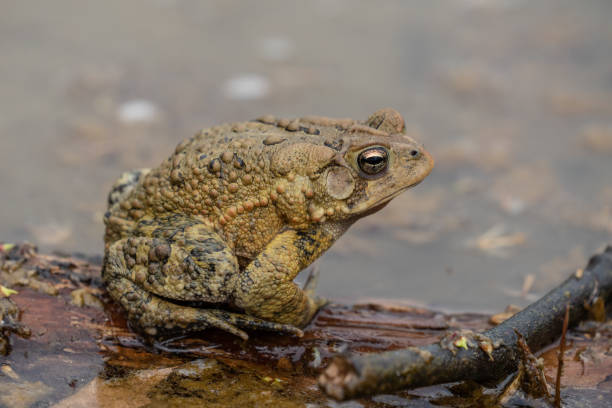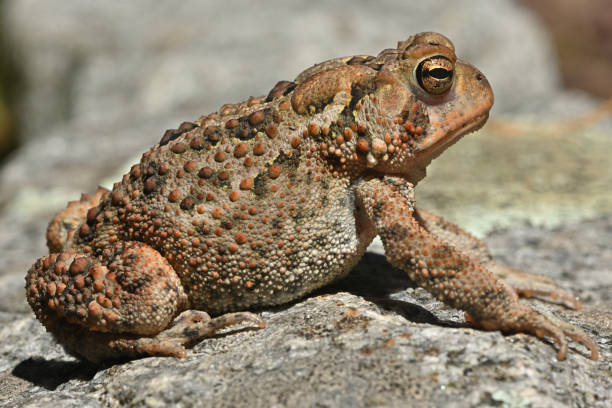Table of Contents
Scientific Classification
| Kingdom | Animalia |
| Phylum | Chordata |
| Class | Amphibia |
| Order | Anura |
| Family | Bufonidae |
| Genus | Anaxyrus |
| Species | Anaxyrus americanus |
| Scientific Name | Anaxyrus americanus |
Description
The American toad is a small to medium-sized amphibian known for its bumpy, warty skin and distinctive call. Typically, it measures between 2 to 4.5 inches (5 to 11 cm) in length and has a stout body with short legs. Its skin color can range from brown, gray, or olive to reddish tones, often featuring darker spots and a white or yellowish belly. The texture of their skin aids in blending into their environment, providing excellent camouflage.
One notable characteristic of the American toad is its parotoid glands, located behind the eyes. These glands secrete a toxic substance that serves as a defense mechanism against predators. While the toxins are not harmful to humans, they can cause irritation if they come into contact with the eyes or mouth.
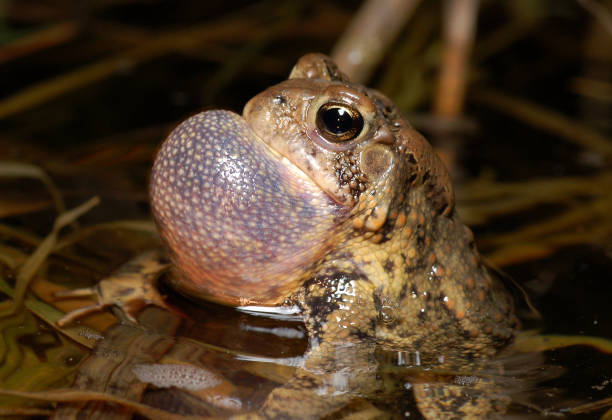
Distribution
The American toad is widely distributed throughout eastern North America. Its range extends from southern Quebec and Ontario in Canada down to the southern United States, including regions in Texas, Florida, and the Appalachian area. As one of the most prevalent toad species in the United States, it inhabits a diverse array of environments.
Habitat
American toads are quite versatile in their habitat choices. They flourish in a variety of environments, including forests, meadows, wetlands, gardens, and suburban areas. Their preference leans towards moist settings that offer ample cover, such as leaf litter, logs, and rocks. During the breeding season, they seek out shallow waters like ponds, marshes, and slow-moving streams to lay their eggs.
In hot and dry spells, they dig into the soil or take refuge under damp logs to keep themselves hydrated. Their ability to adapt allows them to thrive in different habitats, adjusting to a range of conditions.
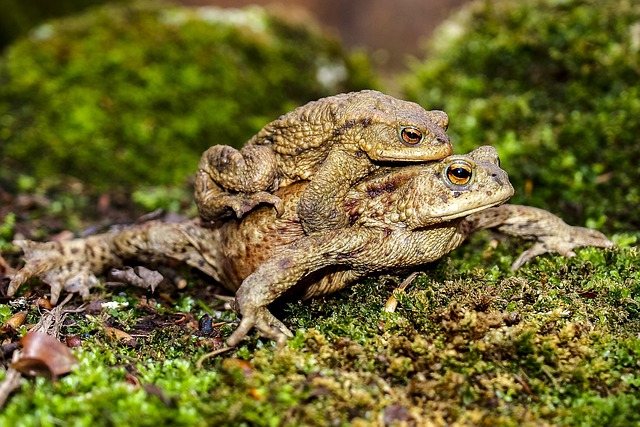
Diet
American toads are carnivorous and primarily feed on small invertebrates. Their diet includes:
Insects (beetles, ants, moths, crickets)
Spiders
Slugs and snails
Earthworms
They are opportunistic feeders, using their sticky tongues to quickly capture prey. Their feeding habits control insect populations. This makes them helpful for gardens and farms.
Behavior
American toads are mostly nocturnal, becoming active at dusk and throughout the night. During the day, they stay hidden to avoid predators and dehydration.
They are usually alone. But during breeding season, males come together by water. They make loud, trilling calls to attract females. Their call can last between 4 to 30 seconds and is a common sound in wetlands during spring and early summer.
When threatened, American toads puff up to look bigger. They also secrete a mild toxin from their parotoid glands to scare off predators.
Lifespan
In their natural habitat, American toads typically live between 5 to 10 years. However, in captivity, some individuals can reach ages of up to 15 years. Their longevity is greatly influenced by environmental conditions, the presence of predators, and the stability of their habitat.
Reproduction and Lifecycle
Breeding occurs in early spring, typically from March to May. During this period, males congregate at shallow water bodies and call out to attract females. Once a female selects a mate, she lays thousands of eggs in long, jelly-like strands. The male then fertilizes the eggs externally.
Stages of Development:
Egg Stage: The eggs hatch within 3 to 12 days, depending on the water temperature.
Tadpole Stage: Tadpoles emerge and spend 6 to 8 weeks feeding on algae and organic matter found in the water.
In the following weeks, they will develop legs, lose their tails, and transform into toadlets.
Adult Stage: By late summer, they become fully formed toads and start their independent lives on land.
Predators
Despite their toxic skin secretions, American toads face threats from several predators, including:
Snakes (garter snakes have developed resistance to their toxins)
Birds (hawks, crows)
Raccoons
Skunks
Large frogs
They use camouflage, secrete toxins, and puff up their bodies to avoid being eaten.
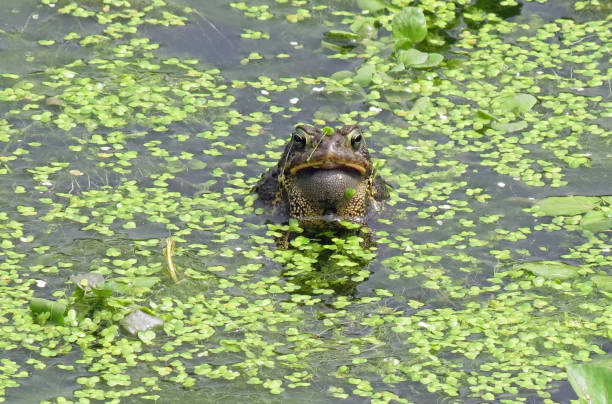
Adaptations
American toads have developed several adaptations that enable them to succeed in their habitats:
Toxic skin secretions: These help deter predators from consuming them.
Camouflage: This allows them to blend seamlessly into their surroundings.
Burrowing behavior: This helps them retain moisture during dry spells.
Rapid reproduction: This ensures the survival of the species, as many tadpoles do not survive to adulthood.
American toads are capable of thriving in areas altered by humans. They adapt effectively to both suburban and urban environments, unlike many other amphibians.
Conservation Status
The American toad is classified as Least Concern by the IUCN. This is because it has a wide distribution and stable populations. However, some localized populations face threats from:
Habitat destruction (urbanization, deforestation)
Pollution (pesticides, chemicals harming aquatic breeding areas)
Climate change (altering breeding cycles and habitats)
Disease outbreaks (chytridiomycosis, a fungal infection affecting amphibians worldwide)
Conservation efforts focus on:
Protecting wetlands
Reducing pesticide use
Promoting awareness of amphibian habitats
Final Thoughts
The American toad plays a crucial role in North America’s ecosystem. They are adaptable to various environments, help manage insect populations, and serve as a food source for other animals. This highlights their ecological significance. By safeguarding their natural habitats, we can ensure their survival and maintain the balance of ecosystems.The American toad plays a crucial role in North America’s ecosystem. They are adaptable to various environments, help manage insect populations, and serve as a food source for other animals. This highlights their ecological significance. By safeguarding their natural habitats, we can ensure their survival and maintain the balance of ecosystems.
